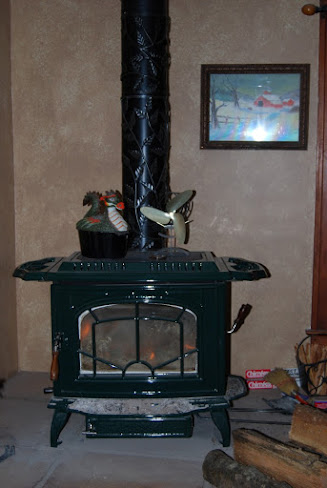Have your cake and eat it too, as they say. Homeowners who purchase a high-efficiency wood-burning appliance in 2022 and 2023 can take advantage of not only efficient and clean-burning heat but receive a nice tax credit as well.
People living off grid or who aspire to a self-sufficient lifestyle love using wood-burning appliances for heating, and in some cases, cooking. Anyone who heats with wood will attest to the fact that it is much less expensive than forced air appliances or electric heating, especially if they can fell trees off of their own land, but the benefits don’t end there. The healing radiant energy produced is a welcome effect for arthritis and fibromyalgia sufferers. Not to mention that sitting in front of a toasty fire in the middle of winter just cannot be beat.
 |
| Freestanding stove |
Anytime changes are made to a fireplace a Level 2 camera inspection is required in most jurisdictions and recommended in any case. A professional CSIA Certified Chimney Sweep should do this inspection. Find one at www.csia.org.
 |
| Site built masonry heater by Gene Padgitt |
masonry absorbs the heat, then releases it into the room. Houses with open floor plans are best suited to this type of heater since it does not use fans or ducts to distribute heat. Radiant heat is emitted from all four sides of the appliance. There are kits manufactured which may include only the heater core, or the entire finished product. Heater masons also build masonry heaters without kits. Masonry heaters are the most efficient type of wood-burning appliance, and they use 2/3 less wood than a high-efficient wood-burning stove. For more information visit www.chimkc.com or www.mha-net.org.
In recent years, the wood-burning industry has modified and improved their products to the point that they now produce extremely efficient appliances that burn clean with little emissions. Some are better than others, but appliances with an efficiency rating of 75% or higher and approved by the EPA (Environmental Protection Agency), will provide home heating and be eligible for the credit. Older, less efficient appliances do not qualify for the tax credit.
Appliances that were made prior to 1989 likely do not meet the earlier EPA standards and therefore, are not allowed to be installed in homes. So, think twice before purchasing a used woodstove.
The U.S. Biomass Tax credit allows for a tax credit of 26% of the purchase and installation costs for eligible products purchased and installed between January 1, 2021 and December 31, 2022. Appliances must have an efficiency rating of 75% or more.
For eligible products purchased and installed between January 1, 2023 and December 31, 2023, the tax credit is reduced to 22% of the purchase and installation costs. Any eligible product purchased in 2020 but installed in 2021, can be claimed on a 2021 tax return. Products must be claimed on the tax return year in which the product installation is complete. Keep your receipts for your accountant and register your appliance on the manufacturer website.
The nice thing about this government offer, which likely will not be repeated, is that not only is the appliance itself covered in the Tax Credit, but the chimney pipe or flue liner and labor for installation as well. This can add up to a hefty amount.
Now for the not-so-good news: Be prepared for a long wait time for your new appliance since manufacturers are having a hard time keeping up with the demand. And prices on everything have gone up and will likely continue to climb. So, order that new appliance now even if you have to wait a few months for the installation.
Marge Padgitt is a chimney industry veteran and author of Wood-Fired Heating and Cooking. Reach her at hearthmasters.office@gmail.com.






